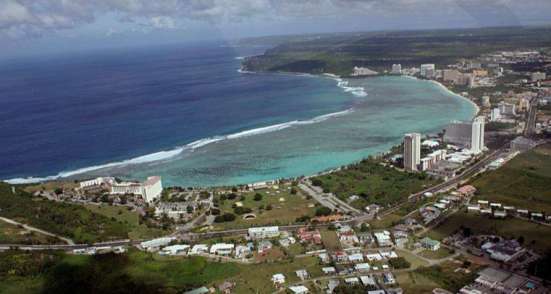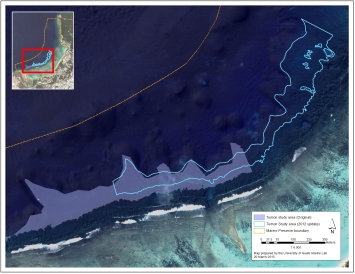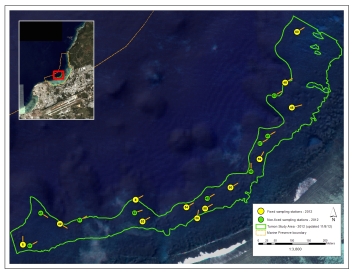Tumon Bay was selected as the first area targeted for long-term monitoring. It hosts the Tumon Bay Marine Preserve and is a hub for tourism, recreational, and cultural activities on Guam. While the numerous potential impacts (e.g., from coastal development, recreational and commercial use) to the bay’s reef ecosystem make discerning individual impacts difficult, the intensive, comprehensive monitoring of carefully selected reef zones and depth strata will increase the likelihood that even relatively small changes in key ecosystem health parameters can be detected, and that reasonable indications of probable causes will be provided. Data collected by other programs, such as in situ instrumentation installed and maintained by NOAA CRED, a comprehensive resource inventory and subsequent monitoring occurring as part of DAWR’s eco-permit program, Rapid Ecological Assessment data collected as part of the NOAA MARAMP, Guam EPA EMAP and STMP data, and other monitoring and assessment activities will all contribute to the improved understanding of coral reef ecosystems in the bay, how they are changing over time, and how they are affected by human activities.
Partial monitoring within the bay occurred in June 2009 and full data collection commenced in 2010. When the results of a preliminary analysis of data collected in Tumon Bay in 2010 indicated that the eastern and western halves of the site possessed distinctly different benthic communities, it was determined that the site boundaries would need to be re-drawn in order to minimize this variance and increase the ability to detect relatively small changes in reef condition. In order to collect data to inform the re-delineation of the Tumon site, a series of three exploratory dives was carried out. Photos taken during the exploratory dives were georeferenced and used in a GIS to delineate new site boundaries that enclose a more homogenous benthic community. The new Tumon site boundary includes about half of the original site and extends northwestward.


